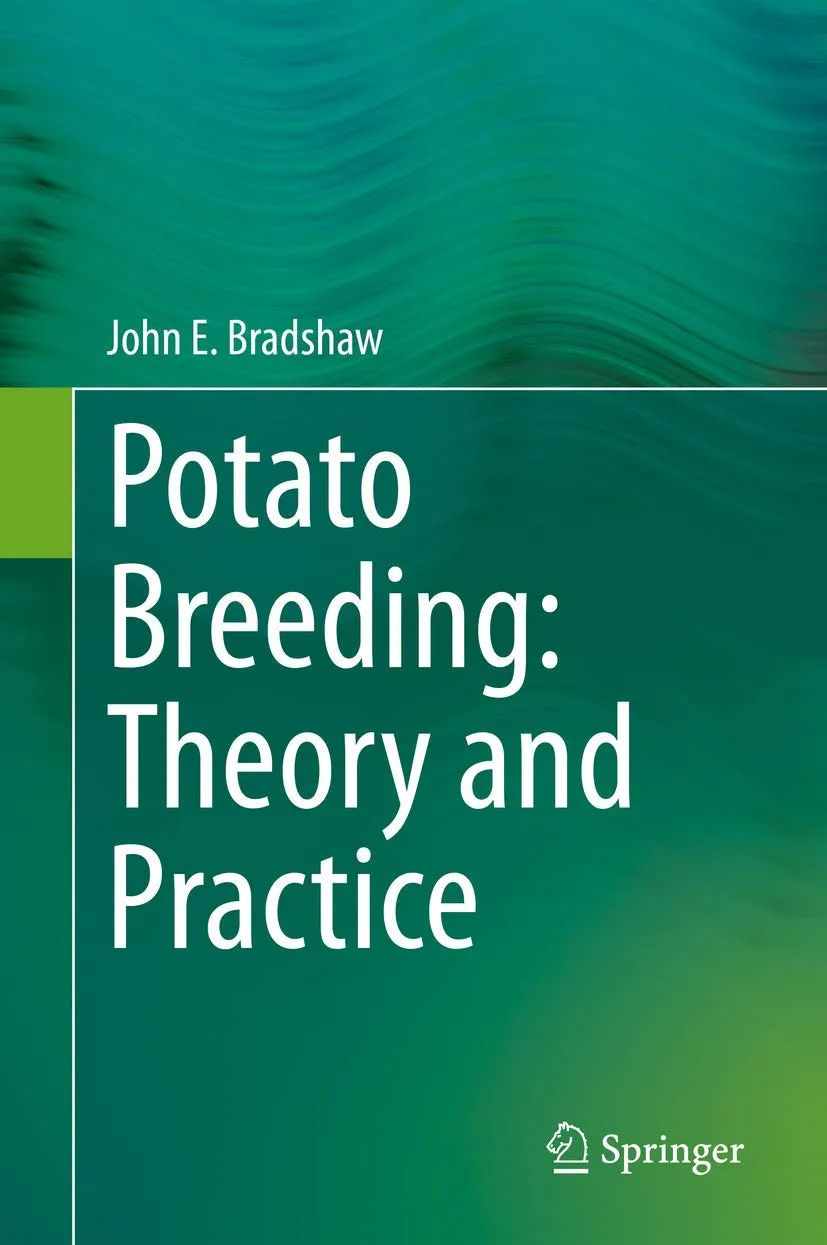Home
|
Products
|
9789356962026

Potato Breeding Theory And Practice | Hardcover
by Bradshaw J.E.
Highlights

9783030644130
ISBN

Bradshaw J.E.
Author

563
Pages

215 gm
Weight

English
Language

2021
Year

1st Edition
Edition

Hardcover
Binding
₹20007
₹22230
The potato (Solanum tuberosum) is the worlds fourth most important food crop after maize, rice and wheat with 377 million tonnes fresh-weight of tubers produced in 2016 from 19.2 million hectares of land, in 163 countries, giving a global average yield of 19.6 t ha-1 (http://faostat.fao.org). About 62% of production (234 million tonnes) was in Asia (191), Africa (25) and Latin America (18) as a result of steady increases in recent years, particularly in China and India. As a major food crop, the potato has an important role to play in the United Nations 2030 Agenda for Sustainable Development which started on 1 January 2016 (http://faostat.fao.org). By 2030 the aim is to ensure access by all people, in particular the poor and people in vulnerable situations, including infants, to safe, nutritious and sufficient food all year round. By then, the world population is expected to reach 8.5 billion and continue to increase to 9.7 billion in 2050. For potatoes, theneed is to increase production and improve nutritional value during a period of climate change, a key aspect of which will be the breeding of new cultivars for a wide range of target environments and consumers.The aim of the book is to help this endeavour by providing detailed information in three parts on both the theory and practice of potato breeding. Part I deals with the history of potato improvement and with potato genetics. Part II deals with breeding objectives, divided into improving yield, quality traits and resistance to the most important diseases and pests of potatoes. Part III deals with breeding methods: first, the use of landraces and wild relatives of potato in introgression breeding, base broadening and population improvement; second, breeding clonally propagated cultivars as a way to deliver potato improvement to farmers fields; third, as an alternative, breeding potato cultivars for propagation through true potato seed; and fourth, gene editing and genetic transformation as ways of making further improvements to already successful and widely grown cultivars. Included are marker-assisted introgression and selection of specific alleles, genomic selection of many unspecified alleles and diploid F1 hybrid breeding.
Online store of medical books
Discover a comprehensive range of medical books at our online store. From anatomy and physiology to the latest clinical guidelines, we've got you covered.
Trusted by students, educators, and healthcare professionals worldwide. Browse top publishers and expert-authored titles in every medical specialty. Enjoy fast shipping, secure payments, and easy returns. Your one-stop destination for quality medical knowledge at your fingertips.
Whether you're preparing for exams or expanding your clinical expertise, our curated collection ensures you have the right resources at hand. Dive into detailed illustrations, case studies, and up-to-date research that enhance your understanding and practical skills.
We regularly update our inventory to include the latest editions and newly released titles, helping you stay current in the ever-evolving medical field. Our advanced search and filtering tools make finding the perfect book quick and hassle-free.
Join our community of lifelong learners and medical enthusiasts. Sign up for exclusive discounts, early access to new arrivals, and personalized book recommendations tailored to your professional interests.
